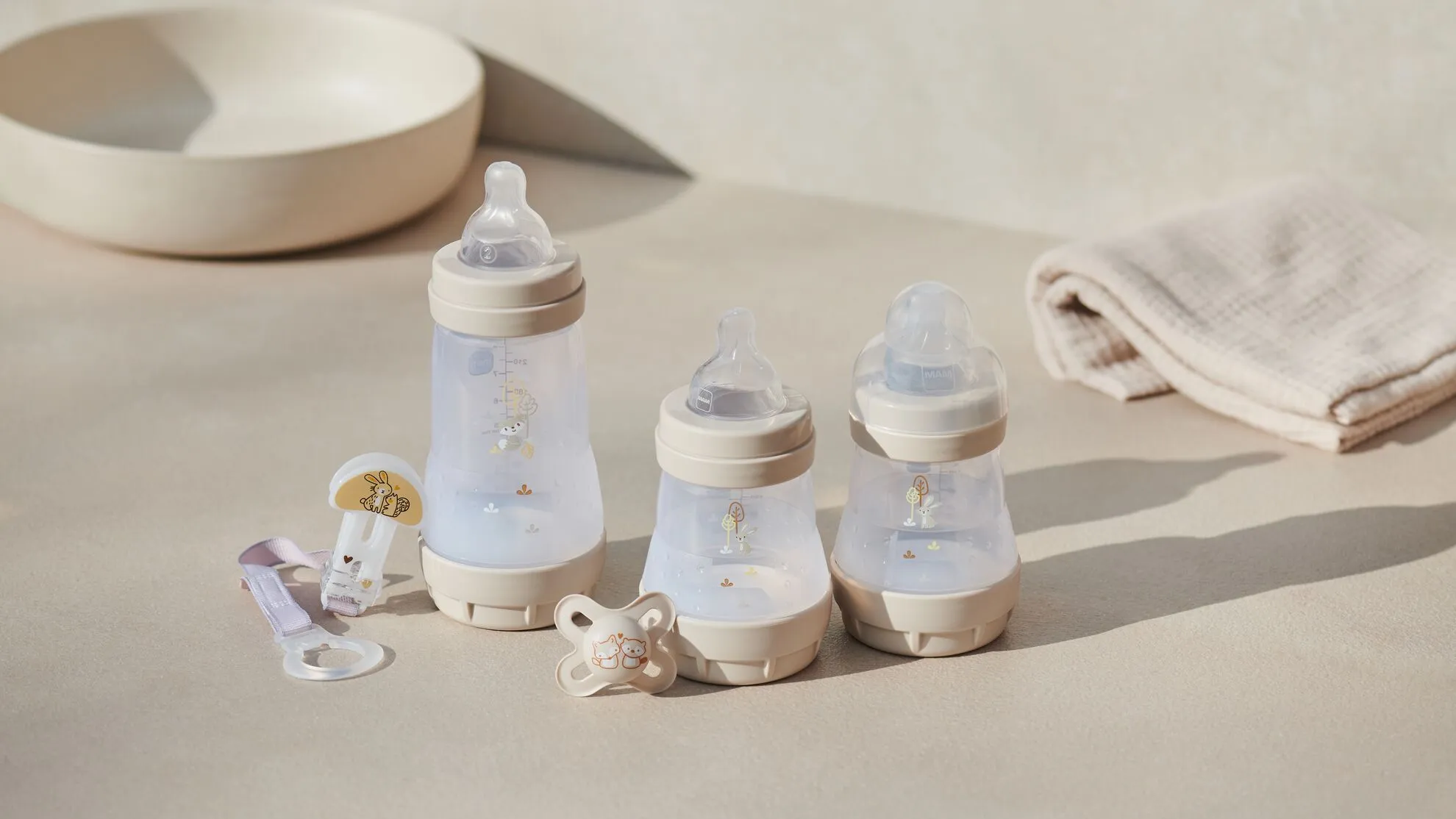Breastfeeding is great for babies – that much is certain. However, the questions usually start right from the beginning: How do I get my baby to latch correctly? What is the best breastfeeding position? How can I avoid sore nipples? And what does holding a football have to do with breastfeeding? We take a look at all the breastfeeding tips you want to know and much more in this article!
How do I best position my baby for breastfeeding?
Breastfeeding has a lot to do with technique and skill – for both you and your baby. If you apply the right technique when latching your baby on, you can help avoid sore nipples and make sure your baby gets enough milk.
1. Make yourself comfortable
Many new mothers find that breastfeeding is initially easiest in a sitting or lying position. A chair with an armrest is helpful to support yourself. (Nursing) pillows can also help you adopt a relaxed position. It is best to support your baby's back by holding him or her under your arm and against your belly, so that he or she can lie at breast height. Make sure that you feel completely comfortable – you may have to stay in this position for quite some time!
2. Make it as easy as possible for your baby
Ideally, the infant should lie on its side on the pillow, tummy to tummy with its mother and with its head resting on the forearm or in the crook of the arm. This way you can firmly support your baby's back and hold its bottom or thighs with your hand. It is important that the baby's head and body are in line: your baby must not be twisted or curled up. In addition, the infant should be able to latch on to the nipple without a great deal of movement – this avoids injuries from straining or turning the head.
3. Offer the breast
Support your breast in your free hand with your hand positioned sufficiently far away from the areola. Your fingers are down, your thumb is up forming a C shape (C-hold) around the breast. If your baby's mouth is not already open, you can rub the nipple over their lips or cheek to trigger the rooting reflex and get baby to turns their head towards you.
4. Hold the breast correctly
When your nipple touches the baby's lips or cheek, ideally the baby should open its mouth. If not, give your baby time. Never press their head against your breast. Wait until theyi opens their mouth, position the nipple over the tongue in the mouth, and then draw it towards you – your baby will then ideally latch on by themselves. Don't worry if it doesn't work on your first attempt.
Even though breastfeeding is a completely natural process, babies need time to get used to it. Your child should have a large part of the areola in the mouth in order to latch on properly and suck effectively.
The milk-producing cells are located directly beneath the areola. These must contract to ensure that enough milk flows. The baby massages the breast very effectively with its chin when sucking, which can also help to prevent blocked milk ducts. Don't worry if your little one's nose lies against your breast – this will not interfere with breathing.

5. Different breastfeeding positions
Changing breastfeeding positions regularly avoids overworking one area of your nipple. And if you tend to suffer from milk blockages, it is helpful for the baby's jaw to massage different areas of the breast while sucking.
Whether it's the finding right breastfeeding position, getting your baby to latch on well, or help with specific issues, it is always helpful to consult a breastfeeding professional, such as a lactation consultant, midwife, health visitor or breastfeeding group.
Photos: Shutterstock
Illustrations: Inge Wurzinger

































